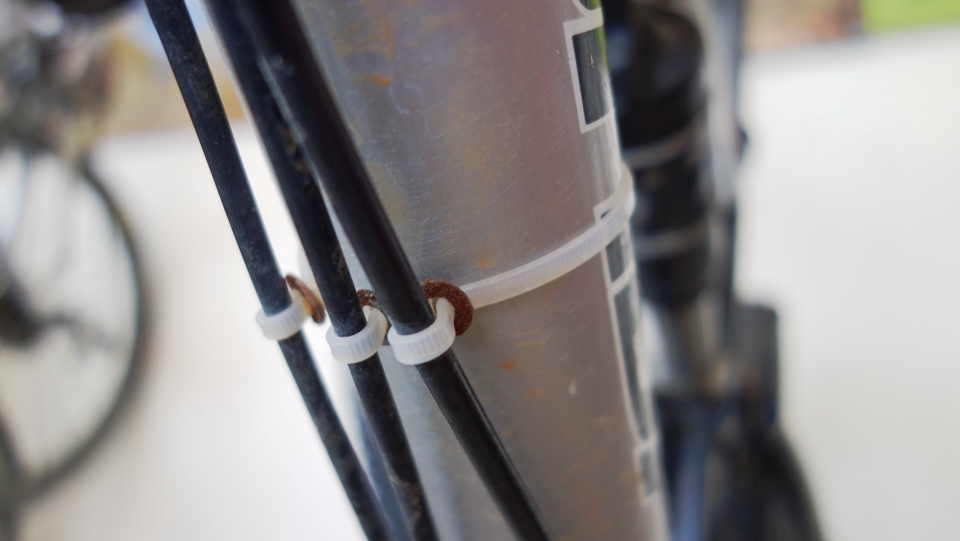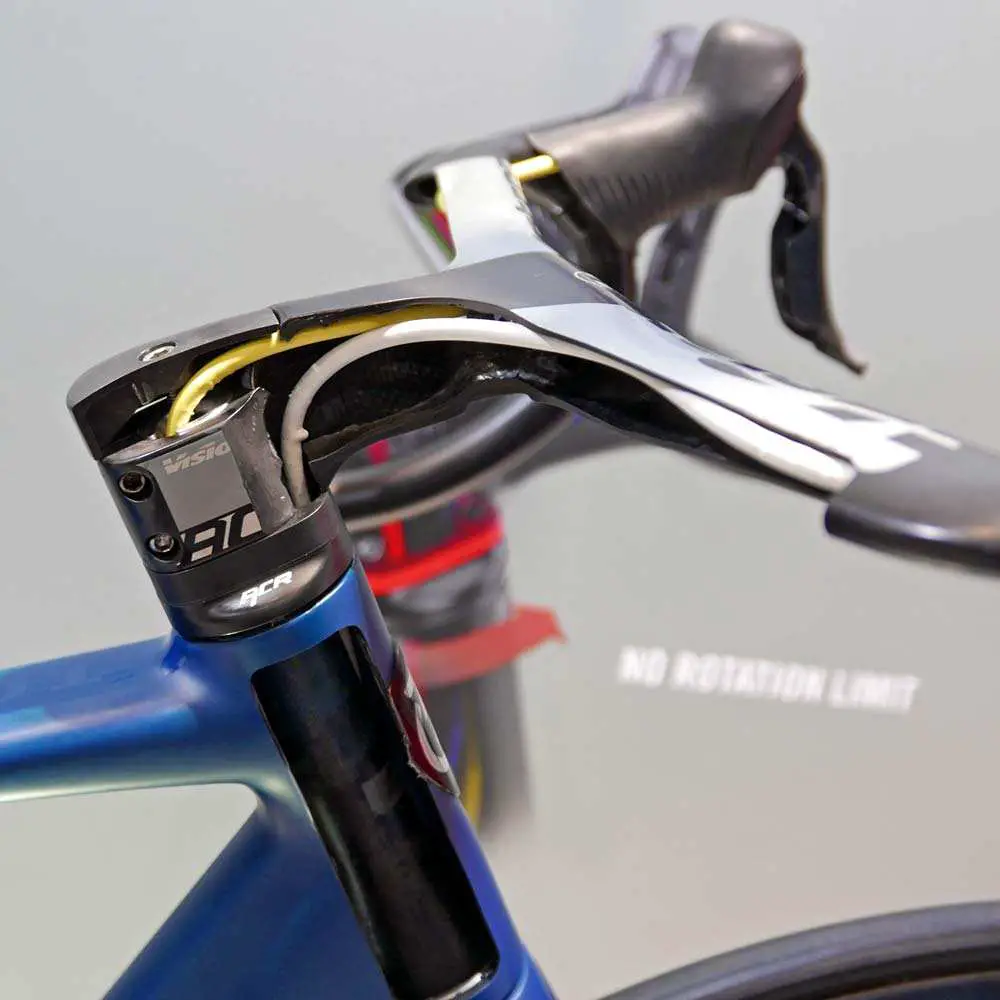Why Hide Cables on a Road Bike?
Installing internal cable routing systems or using frame-specific cable guides and clips on your road bike offers several benefits. Improved aesthetics is a primary advantage, as hidden cables create a sleek, clean appearance, enhancing the overall look of the bike. Additionally, reducing the number of visible cables can minimize aerodynamic drag, contributing to increased speed and efficiency during rides. Furthermore, hidden cables can make bike maintenance easier, as they are less likely to accumulate dirt and debris and are better protected from damage caused by external elements.
Assessing Your Bike’s Cable Configuration
Before attempting to hide cables on your road bike, it is crucial to understand the existing cable layout and the various cable types involved. Gear cables and brake cables are the two primary components you will encounter. Gear cables, also known as derailleur cables, control the shifting mechanism, while brake cables manage the braking system. Both cable types require careful consideration when planning to conceal them, as their routing options may differ depending on the bike’s design and components.
To begin, examine your road bike and identify the current cable routing. Note the entry and exit points of the cables, as well as any potential obstacles or challenges that may arise during the cable-hiding process. Understanding your bike’s unique configuration will help you choose the most suitable method for hiding cables and ensure a smooth, efficient installation.
Option 1: Internal Routing Systems
Internal routing systems offer a clean and efficient solution for hiding cables on your road bike. These systems involve running the cables through the bike’s frame tubes, providing a sleek appearance and reducing aerodynamic drag. Installing an internal routing system typically requires the following steps:
- Gather the necessary tools and materials, including the internal routing kit, cable cutters, cable crimps, and lubricant.
- Plan the cable routing path, taking into account any frame obstacles or tight spaces that may require special attention.
- Feed the cables through the frame, starting from the entry points and guiding them towards the exit points. Use lubricant to facilitate cable movement and minimize friction.
- Secure the cables in place using cable crimps or clamps, ensuring a snug fit without excessive tension that could damage the cables or components.
- Test the shifting and braking systems for proper function, adjusting cable tension as needed.
Installing an internal routing system can be a complex task, especially for those with limited mechanical experience. It may be helpful to consult a professional mechanic or experienced cyclist for guidance or assistance. Additionally, some newer road bikes come equipped with internal routing systems as a standard feature, simplifying the cable-hiding process.
Option 2: Frame-Specific Cable Guides and Clips
Frame-specific cable guides and clips offer a practical solution for cable management on your road bike. These components are designed to secure and direct the cables along a predetermined path, maintaining a clean appearance while ensuring optimal performance. To choose and install the right cable guides and clips, follow these steps:
- Identify the cable types and routing options on your bike.
- Research frame-specific cable guides and clips compatible with your bike’s make and model.
- Purchase high-quality cable guides and clips designed for your specific bike model.
- Install the cable guides and clips, following the manufacturer’s instructions.
- Test the shifting and braking systems for proper function, adjusting cable tension as needed.
By using frame-specific cable guides and clips, you can maintain a clean appearance on your road bike without compromising performance or safety.
Option 3: Custom-Made Cable Housings and Wraps
Custom-made cable housings and wraps provide a creative and personalized approach to cable concealment on your road bike. These accessories can be purchased from various manufacturers or crafted at home, allowing you to add a unique touch to your bike while maintaining a clean appearance. To explore custom-made cable housings and wraps, consider the following options:
-
Purchasing Custom-Made Cable Housings: Several companies specialize in creating custom cable housings tailored to your bike’s specifications. Brands such as Nokon, Jagwire, and Yokozuna offer custom-colored and -sized cable housing options. These housings can be ordered online or through local bike shops, and installation typically involves securing the new housing to your bike’s frame using zip ties or clamps.
-
Creating Your Own Cable Housings: If you possess the necessary skills and materials, you can create your own custom cable housings. This process involves cutting and shaping heat-shrink tubing or other flexible materials around your bike’s existing cables. Online tutorials and DIY resources can guide you through this process, providing step-by-step instructions and recommendations for materials and tools.
-
Applying Cable Wraps: Cable wraps offer an alternative method for concealing cables, providing both functionality and aesthetics. These wraps can be purchased in various colors, patterns, and materials, allowing you to customize your bike’s appearance. To apply cable wraps, simply secure them around your existing cables using adhesive or zip ties, ensuring a snug fit without excessive tension.
Custom-made cable housings and wraps enable you to hide cables on your road bike in a creative and personalized manner. By exploring these options, you can enhance your bike’s appearance while ensuring optimal performance and longevity.
Maintaining Your Hidden Cables
Regular maintenance is crucial for ensuring optimal performance and longevity when hiding cables on your road bike. By following a few simple steps, you can keep your hidden cables in excellent condition and prevent potential issues. Here are some tips for maintaining your hidden cables:
-
Inspect Cables and Housing: Periodically examine your cables and housing for signs of wear, corrosion, or damage. Pay particular attention to areas where the cables bend or rub against the frame, as these are common locations for issues to arise. Address any problems promptly to prevent further damage or compromised performance.
-
Clean and Lubricate Cables: Regularly clean your cables and housing using a soft cloth and a mild solvent, if necessary. After cleaning, apply a light lubricant to the cables to reduce friction and ensure smooth operation. Be sure to wipe away any excess lubricant to prevent dirt and debris accumulation.
-
Adjust Cable Tension: Over time, cable tension may change due to temperature fluctuations, settling, or other factors. Periodically check and adjust your cable tension to maintain proper shifting and braking performance. Consult your bike’s user manual or a professional mechanic for guidance on adjusting cable tension if needed.
-
Protect Cables from the Elements: Exposure to rain, mud, and other elements can accelerate cable degradation. Whenever possible, shield your cables from the elements using cable wraps, housing, or other protective measures. This is especially important for internal routing systems, where water and debris can accumulate and cause damage.
By following these maintenance tips, you can preserve the appearance and functionality of your hidden cables, ensuring a clean, efficient, and reliable road bike.
Balancing Aesthetics and Functionality
When hiding cables on a road bike, striking a balance between aesthetics and functionality is crucial. While concealing cables can enhance your bike’s appearance and reduce aerodynamic drag, it is essential to ensure that the hiding method does not compromise performance or safety. Here are some factors to consider when balancing aesthetics and functionality:
-
Cable Routing: Ensure that cables are routed in a manner that minimizes friction and tension, allowing for smooth operation and extended cable life. Avoid sharp bends or kinks, which can cause damage or reduce cable efficiency.
-
Cable Protection: Protect your cables from the elements and potential damage by using cable wraps, housing, or other protective measures. This is especially important for internal routing systems, where water and debris can accumulate and cause issues.
-
Ease of Maintenance: Choose a cable-hiding method that facilitates regular maintenance and adjustments. For example, frame-specific cable guides and clips can be easily removed for cleaning and lubrication, while internal routing systems may require more time and effort to maintain.
-
Compatibility with Future Upgrades: Consider the compatibility of your cable-hiding method with potential future upgrades, such as electronic shifting systems or hydraulic brakes. Some methods, like internal routing systems, may require modifications or replacements to accommodate new components.
-
Adaptability for Different Riding Conditions: Ensure that your cable-hiding method can withstand various riding conditions, including rain, mud, and extreme temperatures. Select materials and methods that provide adequate protection and flexibility for your specific riding needs.
By carefully considering these factors, you can achieve a clean, aesthetically pleasing road bike without compromising functionality, performance, or safety.
Long-Term Considerations for Cable Hiding
When hiding cables on a road bike, it is essential to consider long-term factors that can impact your bike’s performance, adaptability, and value. By evaluating these factors, you can make informed decisions about the best cable-hiding methods for your specific needs. Here are some long-term considerations to keep in mind:
-
Compatibility with Future Upgrades: If you plan to upgrade your road bike with electronic shifting systems or hydraulic brakes in the future, ensure that your cable-hiding method can accommodate these changes. Internal routing systems may require modifications or replacements to accommodate new components, while frame-specific cable guides and clips can often be reused or replaced with compatible options.
-
Adaptability for Different Riding Conditions: Select cable-hiding methods and materials that can withstand various riding conditions, including rain, mud, and extreme temperatures. This is especially important for road bikes used in diverse climates or for different types of rides. For example, internal routing systems may be more susceptible to water and debris accumulation, while custom-made cable housings and wraps can provide better protection and flexibility.
-
Impact on Resale Value: Consider how your cable-hiding method may affect your road bike’s resale value. While concealing cables can enhance aesthetics and reduce aerodynamic drag, some potential buyers may prefer bikes with traditional cable routing for ease of maintenance or compatibility with existing components. Be prepared to address any concerns or questions about your cable-hiding method during the resale process.
-
Durability and Longevity: Choose cable-hiding methods and materials that are durable and long-lasting, minimizing the need for frequent replacements or repairs. High-quality internal routing systems, frame-specific cable guides and clips, and custom-made cable housings and wraps can provide excellent durability and longevity, ensuring optimal performance and appearance over time.
By taking these long-term considerations into account, you can make informed decisions about hiding cables on your road bike, ensuring a clean appearance, enhanced performance, and lasting value.







